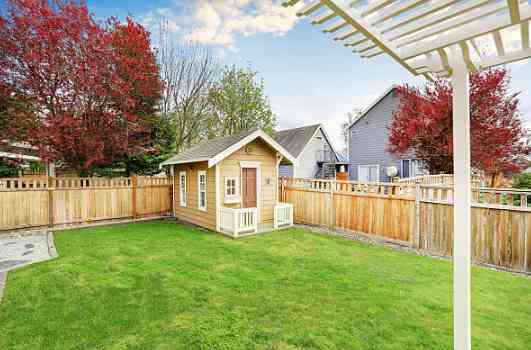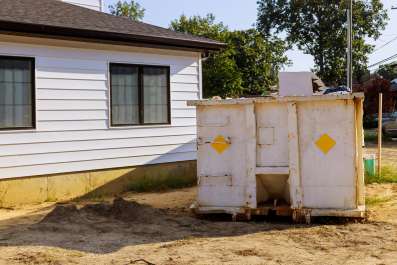
Demolition Cleanup Why It’s a Vital Step in Your Remodel
September 5, 2025
Deck Removal: How to Plan the Project Effectively
September 5, 2025Shed Demolition: The First Step to an Organized Yard
A cluttered yard often begins with an old shed that no longer serves its purpose. Over time, sheds can deteriorate, becoming storage for items you no longer need and an eyesore that takes up valuable space. Demolishing an outdated or unsafe shed is often the very first step toward reclaiming your outdoor area and creating a more organized, functional environment. Shed demolition clears away the past, making room for new projects, improved landscaping, or simply more breathing space in your yard. While it may seem daunting at first, approaching the task with a solid plan makes it manageable. From preparing tools and ensuring safety to handling debris and deciding whether to hire professionals, every step contributes to a smoother experience. Taking the initiative to remove that old structure sets the tone for an organized yard that better suits your lifestyle and vision for your outdoor space.
Evaluating the condition of your shed
Before tearing down a shed, it’s important to carefully examine its current state. Some sheds are unstable due to years of weather exposure, rotting wood, or rusted metal. These conditions can make them hazardous to approach without caution. Checking for weakened beams, broken panels, or compromised roofing gives you a clearer idea of the risks involved. This evaluation also helps you decide if a complete demolition is necessary, or if partial repairs and renovations might be a better option.
Taking the time to evaluate also provides insight into what tools or equipment will be needed. For example, a metal shed may require cutting tools, while a wooden one may only need hammers and pry bars. Structural assessments also reveal how much debris will result from the demolition, allowing you to plan ahead for cleanup. In short, careful evaluation is the foundation of an efficient, safe, and well-organized shed demolition project.
Planning the demolition timeline
Demolishing a shed isn’t something to rush. Having a clear timeline ensures the work is handled in stages rather than in one overwhelming attempt. The timeline might include smaller tasks like emptying the shed, removing doors and windows, dismantling the roof, and then handling walls and flooring. By organizing these steps, you prevent confusion and reduce the chance of accidents caused by working too quickly.
Creating a timeline also helps align the project with external needs, such as renting equipment or scheduling junk removal services. If professionals are assisting, setting clear dates allows them to fit the project into their schedule, avoiding unnecessary delays. A well-thought-out timeline also prevents burnout by breaking the work into manageable chunks. Instead of feeling pressured to finish immediately, you’ll make steady progress, which ensures the entire process stays efficient and organized from start to finish.

Preparing the right tools and safety gear
Shed demolition may seem straightforward, but it requires the right equipment. Common tools include hammers, pry bars, drills, and saws for cutting through sturdy beams. Safety gear is equally important, especially gloves, goggles, and steel-toed boots, which protect against falling debris and sharp edges. Depending on the shed’s size and material, renting specialized tools might make the process more efficient.
Having proper gear not only makes the project smoother but also reduces risks. Demolition often involves splintered wood, rusted nails, or heavy panels that can cause injury if handled without preparation. Setting up ladders securely for roof removal or ensuring you have containers ready for nails and screws can prevent chaos as you work. Preparing your tools and gear in advance allows you to approach each step with confidence, knowing you’re ready for the challenges that come with dismantling an old shed safely and efficiently.
Clearing out the contents beforehand
An often-overlooked part of shed demolition is what’s inside. Over the years, sheds tend to collect tools, lawn equipment, old furniture, and forgotten items. Clearing everything out before starting ensures you don’t risk damaging belongings during demolition. It also creates a safer workspace, free from clutter that could cause trips or injuries. Sorting through the contents gives you a chance to decide what to keep, donate, or discard.
Taking this step helps streamline the rest of the project. Empty sheds are lighter, easier to handle, and allow you to dismantle sections without obstacles in the way. Clearing out contents also gives you an early opportunity to arrange junk removal or recycling for items you no longer need.
Safely dismantling the roof first
One of the most important steps in shed demolition is removing the roof before tackling walls or flooring. The roof is often the heaviest and most structurally significant part of the shed, so handling it first reduces the chance of unexpected collapses. Depending on the shed’s material, this might involve prying up wooden panels, removing shingles, or unscrewing metal sheets. Taking it apart systematically rather than forcing it down minimizes hazards.
By removing the roof carefully, you create a safer environment for dismantling the rest of the structure. Without the roof overhead, you can better assess wall stability and manage the work step by step. It also allows you to control debris rather than dealing with large, dangerous pieces falling unexpectedly.
Taking down walls and structural supports
After the roof is removed, the next stage involves dismantling the walls and supports. This process should be approached gradually to avoid destabilizing the structure too quickly. Start with non-load-bearing panels before moving to the main supports. Removing one section at a time ensures the shed comes down in a controlled manner, keeping both you and the surrounding property safe.
Paying attention to how the shed was built can guide your approach. Some sheds are nailed together, while others rely on screws or bolts. Understanding the construction helps you choose the right tools and prevents unnecessary struggles. As walls and supports are removed, organizing debris into piles makes cleanup easier later. Breaking the process into smaller, manageable steps ensures you maintain control, making the demolition less stressful and much safer overall.
Handling debris and waste responsibly
Demolition naturally creates large amounts of waste, from old boards and nails to broken panels and roofing. Simply leaving the debris scattered around your yard is not an option. Responsible handling involves sorting materials into categories like wood, metal, and hazardous waste. This organization makes disposal easier and supports recycling whenever possible.
Proper waste management also ensures your yard is cleared efficiently, leaving it ready for the next stage of organization or renovation. Arranging for junk removal services helps remove the hassle of transporting heavy or hazardous items yourself. Professionals know how to dispose of treated wood or metal safely, reducing your environmental impact. By handling waste responsibly, you not only protect your property but also contribute to more sustainable practices.
Considering the benefits of professional help
While some homeowners may attempt shed demolition on their own, the task can be more complicated than expected. Larger sheds, or those with concrete bases, require specialized tools and physical effort that can quickly overwhelm a DIY approach. Professional services bring efficiency, expertise, and proper equipment to handle the process smoothly.
Choosing professionals also saves time. They can complete the demolition and handle debris removal in a fraction of the time it would take on your own. This option reduces the risk of injury and ensures the project is handled with care from start to finish. While it requires an upfront cost, the long-term benefits of safety, efficiency, and a clean yard often outweigh the expense.
Preparing the site for future use
Once the shed is gone, the cleared space becomes a blank canvas. Preparing the site properly ensures it’s ready for whatever comes next. This might involve removing leftover nails, leveling the ground, or addressing any concrete foundation. Taking these steps immediately prevents issues when installing new features, planting a garden, or simply enjoying the open space.
Site preparation also offers an opportunity to rethink your yard’s layout. Without the shed in place, you may notice new possibilities for storage, recreation, or landscaping. The effort you put into clearing and preparing the area now will make future projects smoother and more enjoyable.
Understanding the impact on property value
Demolishing an old or deteriorating shed can have a surprisingly positive effect on property value. A damaged shed often gives the impression of neglect, which can lower the appeal of a home to potential buyers. Removing it creates a cleaner, more open yard that feels well-maintained and versatile. This impression can make a significant difference when it comes time to sell.
Even if you don’t plan to move, a shed demolition can still enhance your enjoyment of the property. It provides more space for landscaping, entertainment areas, or new storage solutions. A tidy, organized yard increases both functionality and curb appeal.
Conclusion
Shed demolition is often the first step toward reclaiming and organizing your yard. By assessing the structure, planning carefully, and working with the right tools, the process becomes manageable and rewarding. Each stage, from dismantling the roof and walls to handling debris responsibly, contributes to creating a cleaner and more functional outdoor space. For some, tackling the project alone may be possible, but for many homeowners, professional assistance makes the work faster, safer, and more efficient. With the shed gone, the yard becomes a space full of potential, ready for gardening, new structures, or simply more open space to enjoy.
For dependable help with projects like shed demolition, North Bay Junk Removal provides reliable services in Santa Rosa, CA. Their team specializes in junk removal, making it easy to handle demolition debris and restore order to your property. Call 707-478-6817 to schedule services and take the first step toward an organized and clutter-free yard.




